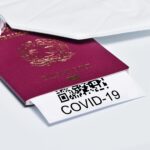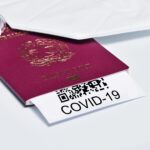In a significant move that underscores Canada’s commitment to bolstering its Francophone communities, Immigration, Refugees and Citizenship Canada (IRCC) has once again held a major Express Entry draw, focusing exclusively on candidates with strong French-language proficiency. This latest Express Entry draw, occurring in the second consecutive week of July, signals a dynamic and proactive approach by the federal government to meet its ambitious immigration targets through strategic, category-based selections. For prospective immigrants, particularly those with French language skills, this development presents a remarkable opportunity on their journey to securing Canadian permanent residence.
Table of Contents
- A Profound Analysis of the Latest French Proficiency Express Entry Draw
- The Strategic Importance of Consecutive Category-Based Draws
- Essential Insights from the Latest Express Entry Draw for Hopefuls
- Foundational Guide: What is Express Entry and How Does It Function?
- Frequently Asked Questions
A Profound Analysis of the Latest French Proficiency Express Entry Draw
The most recent invitation round specifically targeted candidates in the Express Entry pool who demonstrated a high level of proficiency in French. In this draw, IRCC issued a substantial number of Invitations to Apply (ITAs) to candidates who met the minimum Comprehensive Ranking System (CRS) score requirement set for this specific round. While the exact number of ITAs and the CRS cut-off score fluctuate with each draw, this targeted approach means that the required CRS score was likely more accessible for eligible candidates compared to a general (or all-program) draw. For instance, a French-language proficiency draw might have a CRS score significantly lower than a general draw held a week prior, creating a distinct advantage for bilingual or Francophone applicants. This draw continues a trend seen throughout the year, where IRCC leverages category-based selection to pinpoint candidates who can fill specific economic and demographic needs. The focus on French speakers is a direct reflection of Canada’s official policy to promote Francophone immigration outside of Quebec, ensuring the vitality and growth of French-speaking minority communities across the country. Candidates who received an ITA in this draw now have 60 days to submit their complete application for permanent residence to IRCC.
The Strategic Importance of Consecutive Category-Based Draws
The decision to hold draws in consecutive weeks is a powerful indicator of IRCC’s current immigration strategy. This accelerated pace suggests a deliberate effort to achieve the goals laid out in the Canada Immigration Levels Plan. By holding frequent, targeted draws, IRCC can be more agile in responding to labour market shortages and demographic priorities. The introduction of category-based selection in 2023 was a pivotal shift from the previous system, which primarily relied on high CRS scores regardless of a candidate’s specific occupation or skills. Now, the Minister of Immigration has the authority to invite candidates based on attributes that support identified economic goals. For 2024, these categories include Healthcare, Science, Technology, Engineering, and Math (STEM) professions, Trades (such as carpenters, plumbers, and contractors), Transport, Agriculture and agri-food, and strong French language proficiency. This latest French proficiency draw, following another recent draw, demonstrates that having an Express Entry profile aligned with one of these six categories can dramatically increase a candidate’s chances of receiving an ITA. It moves beyond a simple points game and adds a layer of strategic career and skills alignment for aspiring immigrants. This trend also serves as a clear message to potential applicants: developing skills in these in-demand areas, including language, is a critical component of a successful immigration strategy.
Essential Insights from the Latest Express Entry Draw for Hopefuls
For individuals hoping to make Canada their new home, recent draw activity provides several critical takeaways. The emphasis on specific categories means that simply having a high CRS score is no longer the only path to success. Candidates should evaluate how their professional background, skills, and language abilities align with the designated categories. This strategic focus is paramount for maximizing one’s potential within the Express Entry system. The continuous selection of French-proficient candidates, in particular, highlights an invaluable asset for any applicant. Even for those not in a targeted occupation, achieving a high score in the Niveaux de compétence linguistique canadiens (NCLC) for French can open doors to these specialized draws and provide a significant advantage. Based on the recent patterns, here are some key takeaways:
- French Proficiency is a Golden Ticket: IRCC is consistently holding draws for candidates with strong French skills. Investing in French language learning and testing can provide a direct and powerful pathway to an ITA, often with a more attainable CRS score.
- Category Alignment is Crucial: It is no longer enough to be a passive member of the Express Entry pool. Candidates should actively review the six designated categories and determine if their work experience falls within a targeted sector like STEM, healthcare, or trades.
- Maintain an Active and Accurate Profile: With draws happening frequently and sometimes unexpectedly, ensuring your Express Entry profile is up-to-date and accurate is essential. An invitation could come at any time, and an outdated profile could lead to a missed opportunity or a rejected application.
- The CRS Score Still Matters, But Context is Key: While category-based draws can have lower CRS cut-offs, the score remains the core ranking mechanism. In general draws and even within categories, a higher CRS score will always improve a candidate’s ranking and chances of being invited.
- Monitor Draw Trends: Paying close attention to the type of draws IRCC is conducting, the frequency, the number of ITAs issued, and the CRS scores provides valuable intelligence for planning an immigration strategy. The current trend points towards a sustained focus on category-based selection.
Foundational Guide: What is Express Entry and How Does It Function?
For those new to the process, Express Entry is Canada’s primary application management system for several key economic immigration programs. It is not an immigration program itself, but rather a system used to rank and select skilled workers who are likely to succeed economically in Canada. The system manages applications for three federal high-skilled programs: the Federal Skilled Worker Program (FSWP), the Canadian Experience Class (CEC), and the Federal Skilled Trades Program (FSTP). Interested candidates first submit a profile to the Express Entry pool. Based on the information provided—such as age, education, skilled work experience, and language proficiency in English and/or French—they are assigned a score under the Comprehensive Ranking System (CRS). These profiles are then ranked against one another in the pool. Approximately every few weeks, IRCC conducts draws from this pool, issuing Invitations to Apply (ITAs) for permanent residence to the highest-ranking candidates. With the advent of category-based selection, IRCC can now conduct draws that target candidates with specific attributes, such as work experience in a particular occupation or, as seen in this latest draw, strong French language abilities. Receiving an ITA is the critical step that allows a candidate to formally apply for permanent residency in Canada.
Frequently Asked Questions
What is a category-based Express Entry draw?A category-based Express Entry draw is a targeted invitation round where IRCC selects candidates from the Express Entry pool who have specific skills, work experience, or language abilities that align with Canada’s economic priorities, such as healthcare, STEM professions, or French proficiency. How does a French proficiency draw work?
A French proficiency draw specifically invites Express Entry candidates who have demonstrated a strong command of the French language, typically by achieving a minimum score on an approved language test. These draws often have a lower minimum CRS score requirement compared to general draws, providing a significant advantage to Francophone or bilingual candidates. Why is IRCC holding draws so frequently?
The high frequency of recent Express Entry draws suggests a strategic effort by IRCC to meet its annual immigration targets as outlined in the Immigration Levels Plan. Frequent draws allow the department to be more agile in selecting candidates who meet specific, immediate needs of the Canadian labour market and demographic goals. What are the main programs managed under Express Entry?
Express Entry is the application management system for three major federal economic immigration programs: the Federal Skilled Worker Program (FSWP), the Canadian Experience Class (CEC) for those with Canadian work experience, and the Federal Skilled Trades Program (FSTP). What happens after receiving an Invitation to Apply (ITA)?
After receiving an ITA from an Express Entry draw, a candidate has 60 days to submit a complete and accurate application for permanent residence to IRCC. This involves providing detailed documentation to support the claims made in their initial Express Entry profile.
Talk to us to find out more. ->
The content above is not intended to provide legal advice or opinions of any kind and may not be used for professional or commercial purposes.







